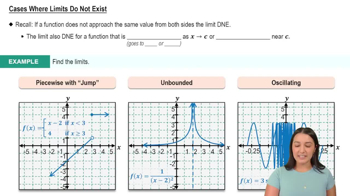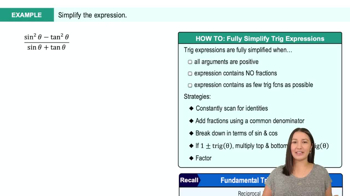Limits of Rational Functions
In Exercises 13–22, find the limit of each rational function (a) as x → ∞ and (b) as x → −∞. Write ∞ or −∞ where appropriate.
f(x) = (2x + 3)/(5x + 7)
 Verified step by step guidance
Verified step by step guidance Verified video answer for a similar problem:
Verified video answer for a similar problem:



 6:47m
6:47mMaster Finding Limits Numerically and Graphically with a bite sized video explanation from Patrick
Start learning